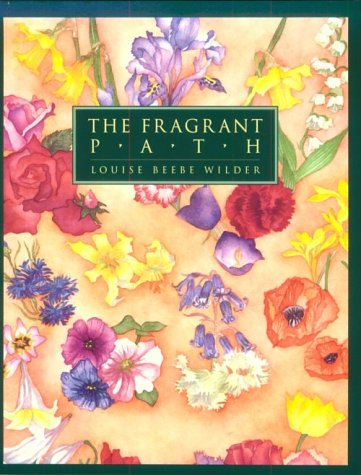![[The Scentual Garden] cover](https://depts.washington.edu/hortlib/graphix/thescentualgarden.jpg)
“Green, resinous, camphorous, nutmeg, a scant suggestion of lemon rind.” Ken Druse has a very keen nose. In The Scentual Garden, he undertakes an adventure, as he puts it, to classify botanical fragrance. Druse wants to give gardeners and designers an expanded lexicon for scent that equals the rich vocabulary we already have for color, texture and form. It won’t surprise anyone familiar with his other books that The Scentual Garden is ‘coffee table’ quality, with heavy paper, lots of color photographs of plants in the landscape and of composed portraits of plants on a solid color background. It’s pleasurable to simply flip through the pages for Ellen Hoverkamp’s photography alone. However, once you start reading the text of this reference book you will ask yourself, do I get “nutmeg and a scant suggestion of lemon rind” from my rosemary shrub?
Druse devised 12 “botanical fragrance categories.” Most are obvious and self-explanatory, such as fruity, medicinal, spice and forest. Others are more esoteric and mysterious, like heavy or indolic, which is described as “mothballs, hot garbage, overripe fruit, excrement…” Eww! Apparently some pleasant-smelling flowers, like gardenia, can have a secondary background scent of indole. I say “apparently” because when I smelled my own gardenia in flower just now I didn’t get anything indolic. But smell is deeply personal, as Druse fully explains in the opening chapters. I grew two varieties of heliotrope this past summer. One smelled like delicious vanilla/cherry pie as expected while the other smelled like the horrible synthetic fragrance used to clean public restrooms. My husband thought of urinal cake. I’ll not grow that cultivar again!
Each category includes an explanation with sample plants, followed by encyclopedia entries for more plants in the category. Plant entries describe the scent, use in the garden, cultivation tips, sometimes a bit of history, and sometimes recommended cultivars. Druse writes with honesty and insight, from personal experience of decades of knowing plants. After reading The Scentual Garden, I’m more likely to sniff my plants and ponder in which category they belong and whether there is a hint of indole in my star jasmine.
Published in the November 2020 Leaflet, Volume 7, Issue 11.
 One of my favorite books on fragrance is The Fragrant Path by Louise Beebe Wilder. Published in 1932, and re-issued in 1990 (the Miller Library has both editions), I don’t think there is a garden fragrance book today that’s any better.
One of my favorite books on fragrance is The Fragrant Path by Louise Beebe Wilder. Published in 1932, and re-issued in 1990 (the Miller Library has both editions), I don’t think there is a garden fragrance book today that’s any better.